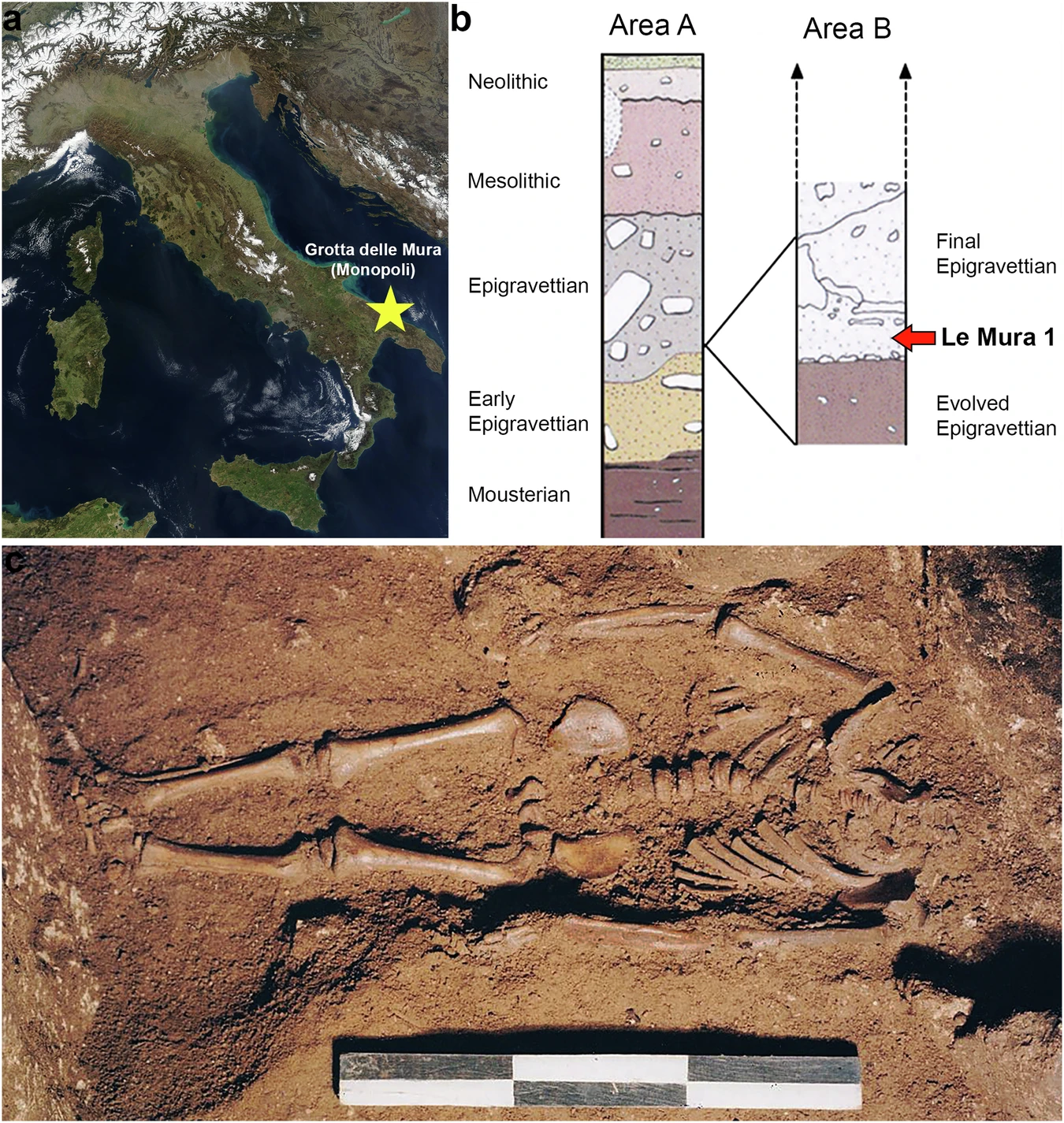What the 17,000-year-old baby found in Italy reveals to us 🦴
Published by Cédric,
Article author: Cédric DEPOND
Source: Nature Communications
Other Languages: FR, DE, ES, PT
Article author: Cédric DEPOND
Source: Nature Communications
Other Languages: FR, DE, ES, PT
Follow us on Google News (click on ☆)

a) Location of Grotta delle Mura on the Italian peninsula (source: NASA Visible Earth, credits to Jacques Descloitres, MODIS Rapid Response Team, NASA/GSFC).
b) Stratigraphy and complete cultural sequence of the site, with the position of the child in the stratigraphy.
c) Photograph of the child during excavation (photo by Mauro Calattini).
Scientific examinations revealed that the child had endured severe health struggles. Their teeth show deficiency marks, suggesting a short life marked by illness and poor nutrition. Analysis indicates that the mother, likely in poor health, had remained in the region. In this nomadic population, this sedentism could be linked to mobility constraints or a difficult pregnancy.
A significant aspect of the DNA analyses also revealed mutations in two key genes, potentially causing hypertrophic cardiomyopathy. This condition thickens the walls of the heart, limiting its efficiency.
These complications could have affected the child from birth or even before. This discovery sheds light on the living conditions and hardships of the first inhabitants of Europe. The baby belonged to a group of hunter-gatherers known as Villabruna, characteristic of glacial peoples in Italy. These communities were small, encouraging inbreeding; the child's parents were likely first cousins.
This burial speaks to the care that early humans gave to their deceased, even the youngest among them. This gesture highlights the complexity of their social structure and funeral practices.
What is the Villabruna group?
The Villabruna group refers to an ancient population of hunter-gatherers who lived in southern Europe after the last glaciation, between 19,000 and 14,000 years ago. Discovered in the Italian region of Villabruna, these individuals revealed distinct genetic traits, combining European and Asian origins.
DNA analyses show that the Villabruna group marked a new lineage in Europe, with significant genetic influence on modern European populations. This group exhibits adaptations to post-glacial conditions and a genetic makeup demonstrating resilience in extreme environments, likely through small, isolated communities.